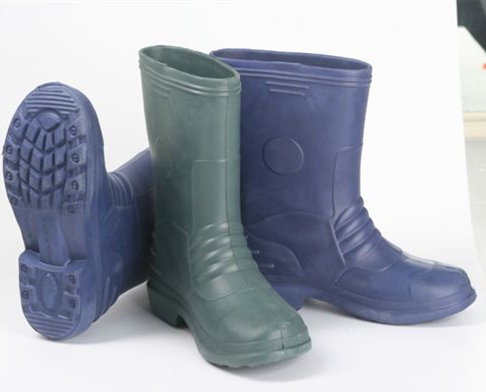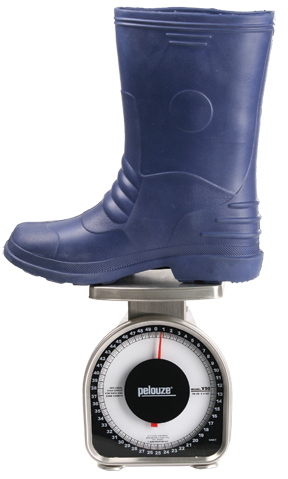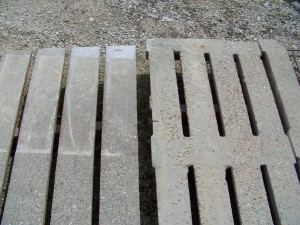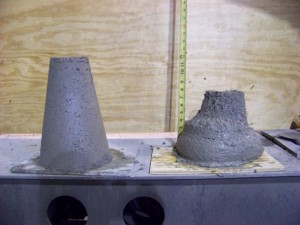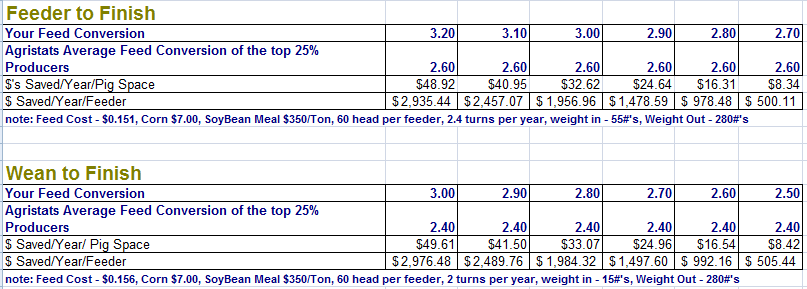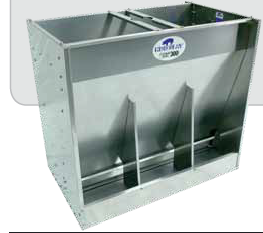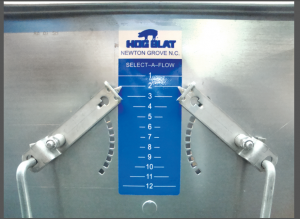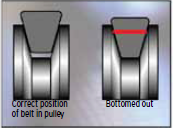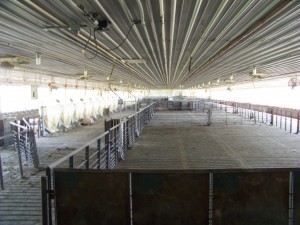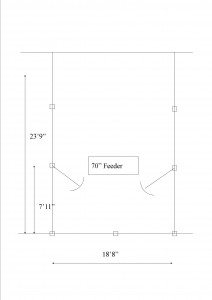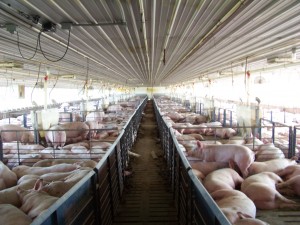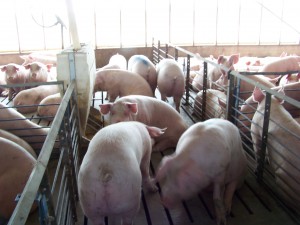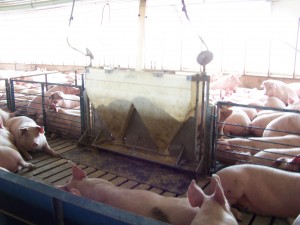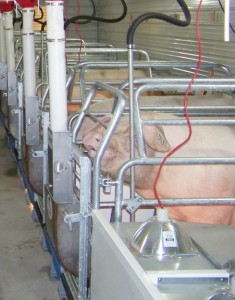While speaking with Perry Hartman, a sales rep for Hog Slat in Minnesota, I was brought up to speed on a topic that is quietly gaining some momentum in the industry…air filtration. Southern Minnesota is an area that has seen rapid growth in pig numbers in the past several decades. This high hog density has made herds there very susceptible to PRRS outbreaks. To combat this, area producers have turned to air filtering to prevent herd infections. Perry has been involved with 6 different projects and is currently working on the 7th. These projects have ranged from a boar stud to a complete 5,000 head sow complex. Perry credits a close working relationship with Dr. Darwin Riecks of the Swine Vet Center in St. Peters, MN in making these projects a success.
Some of the leading technical information has come from an U of M test farm in Morris, MN. There are three different buildings that have been outfitted with three different brands of filters and are tested for effectiveness against the PRRS virus. From this initial research, it was determined the PRRS virus can be transmitted over 5 miles in distance and the greatest risk comes at temperatures between 40°-60° with a light 3-7 mph wind.
Using this information, a basic strategy has evolved around filtering the minimum air flow coming into the building. A typical farrowing room has ceiling inlets for winter/transition air flow. Minimum winter air flow can be effectively filtered by placing filtering boxes in the attic over the inlets.

To permit installation and future service to the attic filtering system, an access is built in the end of the building gable with a stairway and locked door.
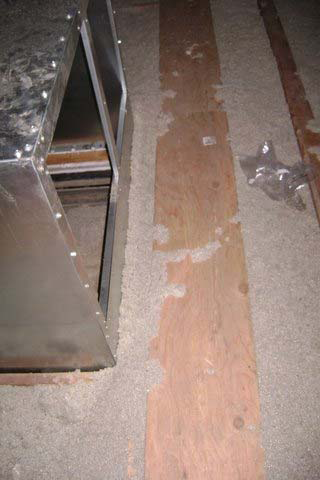
A catwalk is built inside to allow access to inlet filter boxes.

Galvanized boxes are installed between the rafters to mount the filters in. A pre-filter is installed to protect the filter from dust. The building structure needs to be examined for cracks that must be sealed and caulked to prevent unfiltered air from short circuiting the ventilation inlets. By filtering the incoming air during the periods of highest disease threat (40-60°) some producers feel that temperatures above this will kill the virus effectively.
A complete filtration system goes past the basics and includes filtering the maximum air flow coming through the cool cell system. Every situation requires careful calculation but a rough rule of thumb is to provide twice as much air filtering area as existing air inlets.
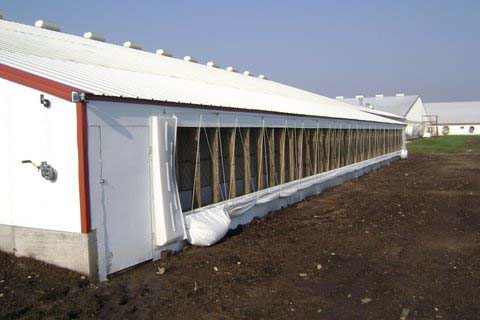
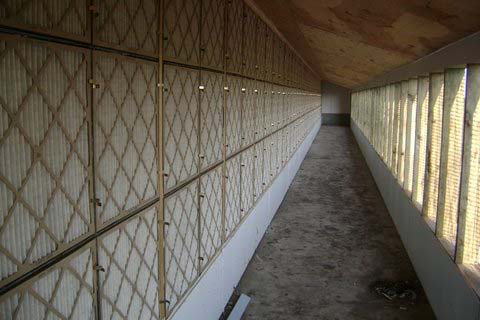
Retrofits for farrowing buildings have involved extending the roof line and adding a hallway to mount the filters in. The filtering pads are installed in the new exterior wall and are protected by an outside curtain.
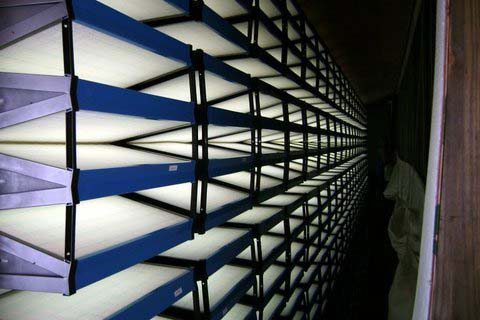
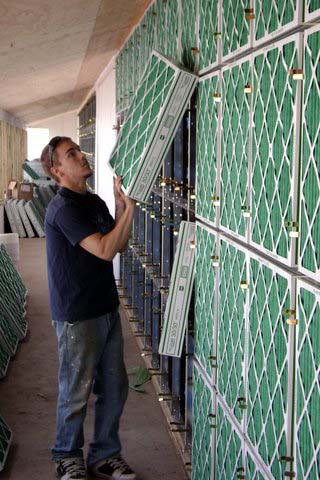
Pre-filters are installed over the filters to prevent clogging of the system by dust and debris.
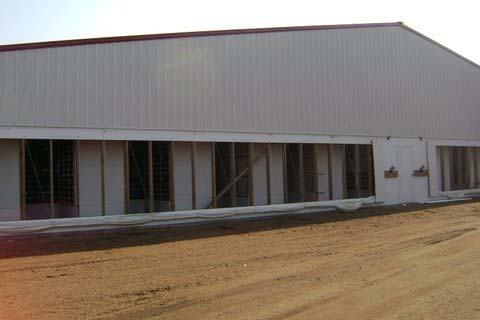
A tunnel ventilation system, as used in many gestation and GDU buildings, require adding an extension on the gable end and creating an area that is large enough to mount the filter system. An “accordion” style arrangement of filter mounting is used in many cases to achieve the desired amount of filtering area.
This is brief overview of the basics for air filtering as it has evolved to date. Again there is no “canned” solution as they are retrofits to existing ventilation systems. Each must be examined carefully and correctly sized to prevent excessively high static pressures that could damage fan motors and the filters themselves. Perry has invaluable knowledge of filtration systems gained through field experience over the last couple of years.












 Україна
Україна Méjico
Méjico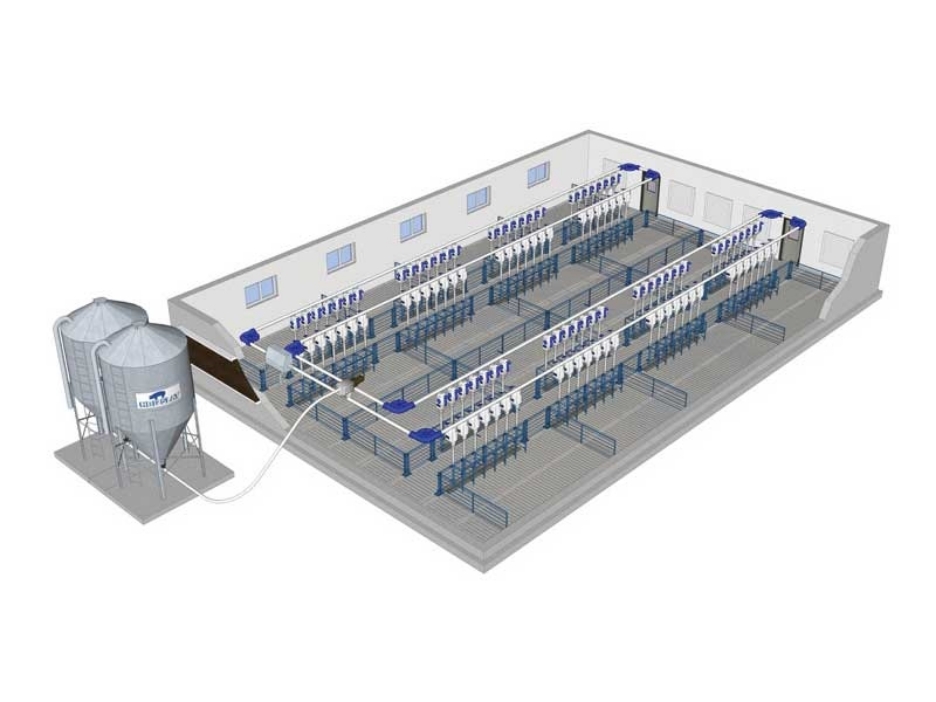
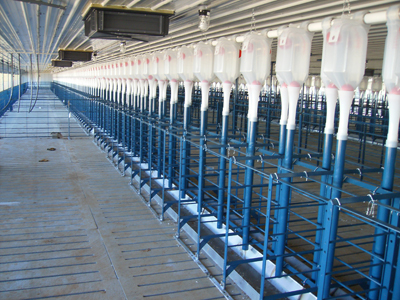 As the swine industry searches for alternatives to stall gestation, another option has emerged and is in the process of being refined. Stanchion Housing refers to short stall-like dividers that are added to open pen gestation to separate and protect the animals as they are fed. It is a refinement over traditional open pens where sow are fed on the floor and group size must be limited to reduce fighting.
As the swine industry searches for alternatives to stall gestation, another option has emerged and is in the process of being refined. Stanchion Housing refers to short stall-like dividers that are added to open pen gestation to separate and protect the animals as they are fed. It is a refinement over traditional open pens where sow are fed on the floor and group size must be limited to reduce fighting.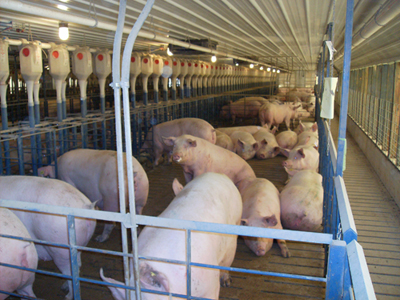 Looking at the total number of animals in a breeding group, a decision can be made on total numbers of sows per pen. Current stanchion systems range from 10 head per pen all the way up to over a hundred. Many producers choose to break a farrowing group into two or three different pens as this allows for grading and sorting weaned animals by body score. Placing sows in similar groups reduces fighting and allows for uniform feeding.
Looking at the total number of animals in a breeding group, a decision can be made on total numbers of sows per pen. Current stanchion systems range from 10 head per pen all the way up to over a hundred. Many producers choose to break a farrowing group into two or three different pens as this allows for grading and sorting weaned animals by body score. Placing sows in similar groups reduces fighting and allows for uniform feeding.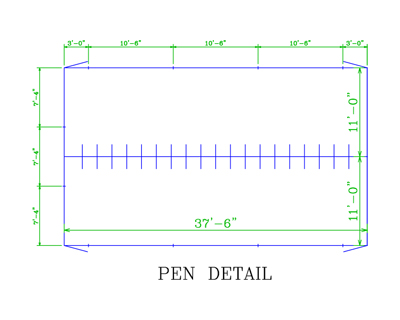 First, long narrow pens are preferred as this prevents a boss sow from blocking feed stanchions. The second design feature is placing the stanchions head to head in the center of the pen rather than placing them along the alleys. Because the stanchions are not in the alleys, the sows can be viewed from the rear during feeding for problems. It also allows for easier animal movement in and out of the pens as the gates are not part of the stanchions. In addition, the number of feed lines needed is reduced.
First, long narrow pens are preferred as this prevents a boss sow from blocking feed stanchions. The second design feature is placing the stanchions head to head in the center of the pen rather than placing them along the alleys. Because the stanchions are not in the alleys, the sows can be viewed from the rear during feeding for problems. It also allows for easier animal movement in and out of the pens as the gates are not part of the stanchions. In addition, the number of feed lines needed is reduced.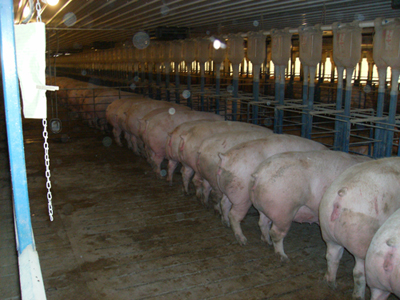 Equipment used in a head-to-head layout consists of stanchions that are 40” tall and 19” long. These dimensions protect the face and ears of the individual sow from aggressive pen mates. Ideal width has been determined to be 20” as this prevents other sows from crowding in to steal feed. Early systems used solid dividers; as we gained more experience with head-to-head systems, the use of open dividers was adopted. The Hog Slat equipment used to configure this layout is an adaption of our standard gestation stall which has been used throughout the industry for over 30 years. The stanchions are constructed of solid horizontal rods with angle top and bottom rails, the entire unit bolts together with galvanized floor spacers and double top spacers for added stability. This style of stanchion fits completely with the standard 40” gestation penning used in the rest of the pen layout. The result is a well-designed system that goes together without a great deal of “field fabrication”. AquaChief cup waterers are added at the rate of one per 11 animals to provide fresh water.
Equipment used in a head-to-head layout consists of stanchions that are 40” tall and 19” long. These dimensions protect the face and ears of the individual sow from aggressive pen mates. Ideal width has been determined to be 20” as this prevents other sows from crowding in to steal feed. Early systems used solid dividers; as we gained more experience with head-to-head systems, the use of open dividers was adopted. The Hog Slat equipment used to configure this layout is an adaption of our standard gestation stall which has been used throughout the industry for over 30 years. The stanchions are constructed of solid horizontal rods with angle top and bottom rails, the entire unit bolts together with galvanized floor spacers and double top spacers for added stability. This style of stanchion fits completely with the standard 40” gestation penning used in the rest of the pen layout. The result is a well-designed system that goes together without a great deal of “field fabrication”. AquaChief cup waterers are added at the rate of one per 11 animals to provide fresh water.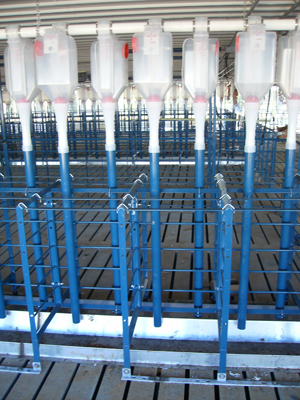 Many of the stanchion systems are remodels, the layout of which has to be adapted to existing slat /solid configurations. If building new projects most producers opt for using total slats as this allows for more flexibility in the event of changes in the welfare regulations.
Many of the stanchion systems are remodels, the layout of which has to be adapted to existing slat /solid configurations. If building new projects most producers opt for using total slats as this allows for more flexibility in the event of changes in the welfare regulations.